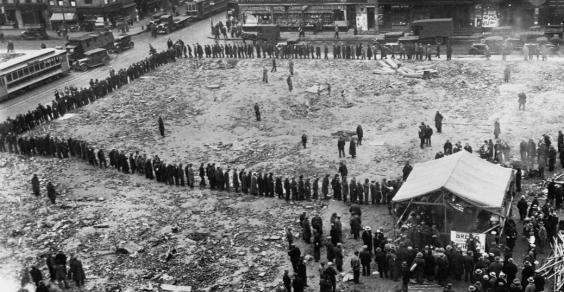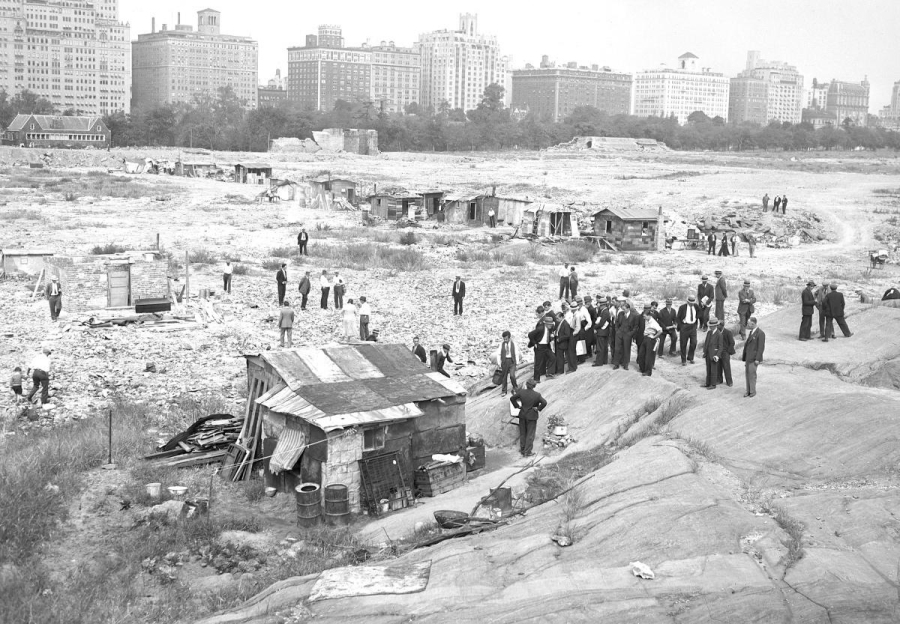New York’s nickname should be the Comeback Kid (who the hell decided it to be the Big Apple??). This is because the city has faced so many upswings and downswings. After party that was the “roaring twenties”, the Great Depression hit the city hard.
I’m piggybacking this documentary for this post; it’s a great one for history lovers and NYC lovers alike. The years prior to the crash saw Manhattan rising to be one of the most modern cities in the world. Aspirations were great. Giant firms and conglomerates were crowding the skies in their palatial towers as impoverished immigrants were crowding the lower east side.
Then the markets failed. This was a huge turning point for the city as they realized that they cannot survive on their own. This is also when LaGuardia and the infamous Robert Moses came into the picture. But that’s another article. At the start of the 30’s, New York was characterized by hardship, broken trust and breadlines. Manufacturing, especially garment, took a hard hit; this was the same across many other industries. People had been evicted en mass and started to camp out and squat where they could.

Shanty towns known as “Hoovervilles” sprung up on the East River, Hudson River, and in Central Park, which was the largest camp. It resembled the slums of today’s developing nations. One of the saddest things from this documentary were the children who picked through piles of garbage. There was also civil unrest to a great degree. Riots broke out in Manhattan, the Bronx as well as other boroughs.
Below are some stills from New York: A Documentary.
The opening of the iconic Empire State Building was coincided with the Depression. Initially, much of the building was not rented and sat empty. Its nickname had become “Empty State Building”. The observation deck brought in as much money as rent; the landmark had not even become profitable until 1950!
Was all this suffering inevitable? In a short answer, mostly. BUT there was a ton of corruption from Tammany Hall as well as a corrupt, greedy, ineffective mayor at the time. Relief to a degree was siphoned off into officials’ pockets.
Although I talked about a plethora of negative aspects the Depression had on the Big Apple, no storm cloud is without its silver lining. Roosevelt’s New Deal gave the city millions in government funds through which many public works projects were funded. A weak mayor gave way to LaGuardia, one of the most influential mayors the city ever had. If anyone is credited for revitalizing the city, and restoring public faith in City Hall, it would be him. The most powerful change, in my opinion, was the fact that there was now a notion that New York would need to work hand-in-hand with DC. It was not the mighty colossus capital of some empire. It was, in fact, a city, just like many others in this country. The Great Depression definitely helped set that into the minds and hearts of many New Yorkers.

For more information on NYC during the Depression, I highly recommend this book as well as the documentary linked above.
Featured image courtesy of 6sqft.com

